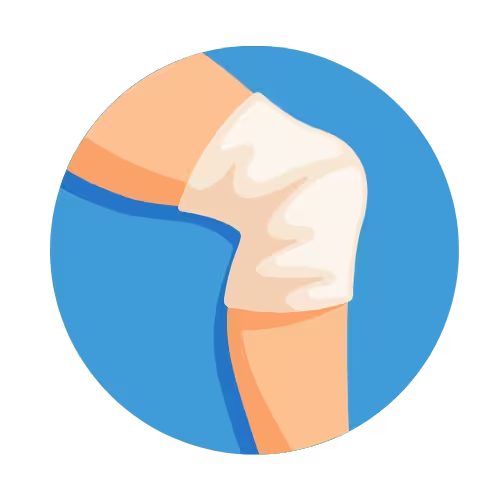Injury Recovery Calculator
Get personalized return-to-lifting protocols and recovery timelines. Plan your safe comeback to strength training after injury.

Injury Assessment
Common Scenarios
Recovery Phases Explained
Phase 1: Acute (0-72 hours)
Goals: Control pain and inflammation
Activities: Rest, ice, compression, elevation (RICE)
Avoid: Aggravating activities, heat, alcohol
Phase 2: Early Recovery (3-14 days)
Goals: Restore range of motion, reduce pain
Activities: Gentle movement, light stretching
Avoid: Heavy loading, painful movements
Phase 3: Progressive Loading (2-8 weeks)
Goals: Rebuild strength and endurance
Activities: Gradual resistance increase
Monitor: Pain levels, movement quality
Phase 4: Return to Sport (6+ weeks)
Goals: Full function restoration
Activities: Sport-specific movements
Criteria: Pain-free, full strength
Understanding Injury Recovery
Injury recovery follows predictable phases, each with specific goals and timelines. Understanding these phases helps you:
- Set realistic expectations for recovery time
- Avoid re-injury through premature return
- Optimize healing through appropriate activity
- Maintain fitness while recovering
Progressive Loading Principles
Start Low, Go Slow
Begin with 40-50% of pre-injury loads and increase by 10-20% weekly if pain-free.
Pain as Your Guide
Use the 24-hour rule: if pain increases the day after exercise, reduce intensity.
Movement Quality First
Perfect form with light weights is better than heavy weights with compensation patterns.
Gradual Progression
Tissues need time to adapt. Rushing the process often leads to setbacks.
Common Injury Types
Muscle Strains
Overstretching or tearing of muscle fibers. Recovery: 2-8 weeks depending on grade.
Joint Sprains
Ligament damage from excessive joint movement. Recovery: 2-12 weeks.
Tendonitis
Inflammation of tendons from overuse. Recovery: 4-12 weeks with proper management.
Back Injuries
Range from muscle strains to disc issues. Recovery varies widely: 2-16 weeks.
Recovery Nutrition
Protein for Repair
Increase protein intake to 1.6-2.2g/kg body weight to support tissue repair.
Anti-Inflammatory Foods
Include omega-3 fatty acids, berries, leafy greens, and turmeric.
Adequate Calories
Don't drastically cut calories during recovery - your body needs energy to heal.
Hydration
Maintain proper hydration to support nutrient transport and waste removal.
When to Seek Professional Help
- Severe pain that doesn't improve with rest
- Inability to bear weight or use the injured area
- Numbness, tingling, or loss of sensation
- Visible deformity or instability
- Signs of infection (fever, redness, warmth)
- No improvement after 2-3 days of conservative treatment
Frequently Asked Questions
How long should I wait before returning to lifting?
This depends on injury type and severity. Generally, wait until you're pain-free during daily activities and have medical clearance before starting progressive loading.
Should I train through pain?
No. Pain is your body's warning system. Some mild discomfort during recovery is normal, but sharp or increasing pain indicates you should stop.
Can I train other body parts while injured?
Usually yes, as long as the exercises don't aggravate your injury. This helps maintain fitness and can even promote healing through increased blood flow.
What if I re-injure myself during recovery?
Stop immediately, return to earlier phase protocols, and consider seeking professional help. Re-injuries often take longer to heal than initial injuries.
.avif)